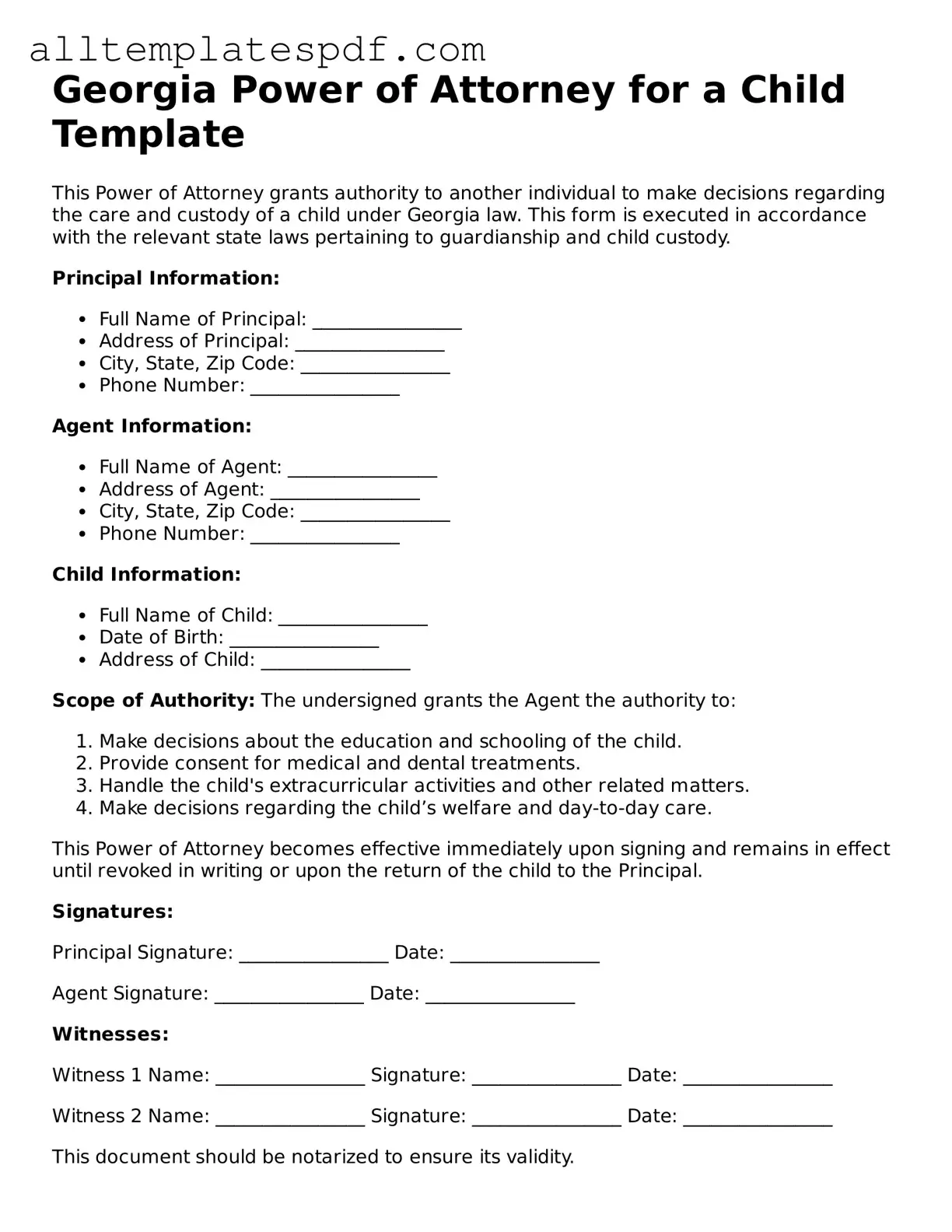Filling out the Georgia Power of Attorney for a Child form can be straightforward, but mistakes are common. One frequent error is not providing complete information. All sections of the form must be filled out accurately. Leaving any part blank can lead to delays or complications later.
Another mistake involves failing to specify the duration of the power of attorney. It’s important to indicate how long the authority will last. If this detail is missing, it may create confusion about when the arrangement ends.
Some individuals overlook the requirement for signatures. Both the parent or guardian granting the power and the agent receiving it must sign the document. Without these signatures, the form is not valid.
People sometimes forget to have the document notarized. In Georgia, notarization is a crucial step. A notary public must witness the signatures to ensure the document is legally binding.
Inaccurate information about the child can also lead to issues. The child’s full name and date of birth must be clearly stated. Any errors in this information can cause problems when the agent tries to act on behalf of the child.
Another common mistake is not providing sufficient identification for the agent. It is advisable to include a copy of the agent's identification. This helps to verify their identity when the power of attorney is used.
Some people fail to understand the limitations of the power of attorney. The form should clearly outline what decisions the agent can make. Not specifying these details may result in misunderstandings later on.
Finally, individuals may neglect to keep copies of the completed form. It’s essential to retain copies for both the parent and the agent. This ensures that everyone involved has access to the same information and can refer to it when needed.
